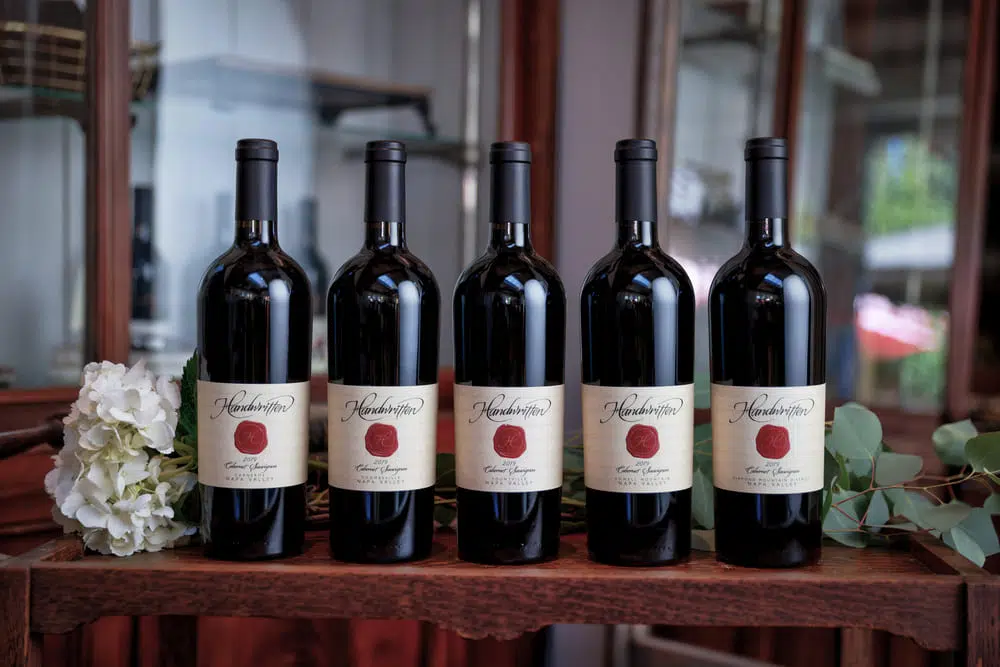Everyone has their taste in wines and will choose different ones for their favorite. Some of us like more than one, while others are fixed on a single varietal or two.
But from among the many that are available, how do we choose the best Napa Valley Cabernet Sauvignon?
Here are some ideas about selecting your favorite.
Region and Terroir
The region and terroir influence the characteristics of Cabernet Sauvignon. The soils, climate, elevations, and geography each contribute to the characteristics of the Cabernet Sauvignon grapes that tend to affect the final wine.
Known for its uncommonly thick skin, high tannins, and relatively high acidity, the Cabernet Sauvignon grape offers notes of black currant and red fruits, cassis, and pepper, sometimes with varying hints of dark chocolate or tobacco. The balance of these characteristics may change depending on where the grapes are grown.
The vine makes up 40% of Napa Valley’s production, although it achieves remarkably different expression because of the varying conditions of the vineyard sites. Cabernet Sauvignons sourced from the Valley floor near Napa will express other characteristics than the smaller grapes harvested at Howell Mountain, for example.
Aromas and Flavors
It becomes the enjoyable task of each wine consumer to discover their favorite Napa Valley Cabernet Sauvignon. Dive into the typical aromas and flavors of each, identifying the nuances of the black currant, plum, cherry, and other notes, as well as the hints of cedar, tobacco, or spice—a pleasing exercise, one that might change from year to year.
Aging Potential
The best Napa Valley Cabernet Sauvignon may benefit from the process of aging, allowing the quality to improve with time. Cellaring in the right conditions will tend to evolve the aromas and flavors to highlight the wine’s favorability.
For example, a younger Cabernet Sauvignon may pair well with more robust red meat dishes like braised lamb, while the older, aged wine is an excellent pairing with prepared roasts and steaks.
Different Winemaking Techniques
Winemakers may choose to adopt different techniques while processing Cabernet Sauvignon grapes. These changes can be due to the differing characteristics of the raw material, as well as creating a different style for the product. Other fermentation methods, barrel aging, and blending practices can alter the final product to create a different structure and balance in the final wine. These adjustments can be subtle or extreme, creating a range of flavors in the final product.
Notable Producers and Vineyards
Some wineries consistently produce superb Cabernet Sauvignons and are considered the best Napa Valley Cabernet Sauvignon producers. In most instances, the wineries are blessed with raw material that is high-quality, consistent, and perfectly suited to their terroir.
Generally, winemakers’ techniques change little each year with only minor adjustments to their methods.
Some of the wineries that consistently produce excellent Napa Valley Cabernet Sauvignon are Handwritten Wines, Jessup Cellars, Crosby Roamann, Stags Leap, Beaulieu Vineyard, Cliff Lede, Larkmead Vineyards, and more.
Reserve Your Wine Tasting at Handwritten Wines
For a satisfying and enjoyable wine tasting, come to the Handwritten Wines Tasting Room in South Yountville at 6494 Washington Street. In business since 2009, Handwritten Wines honors all things handwritten and handcrafted. A destination for lovers of wine and the literary arts, Handwritten Wines fosters a culture of exploration and discussion.
Sample one of the best Napa Valley Cabernet Sauvignon crafted from raw material from the best hillside and mountain vineyards of the region.
To reserve a place for your wine tasting at Handwritten Wines, visit the Handwritten Wines website.
If you have questions or wish to schedule a special event, phone Handwritten Wines at 707-944-8524.

